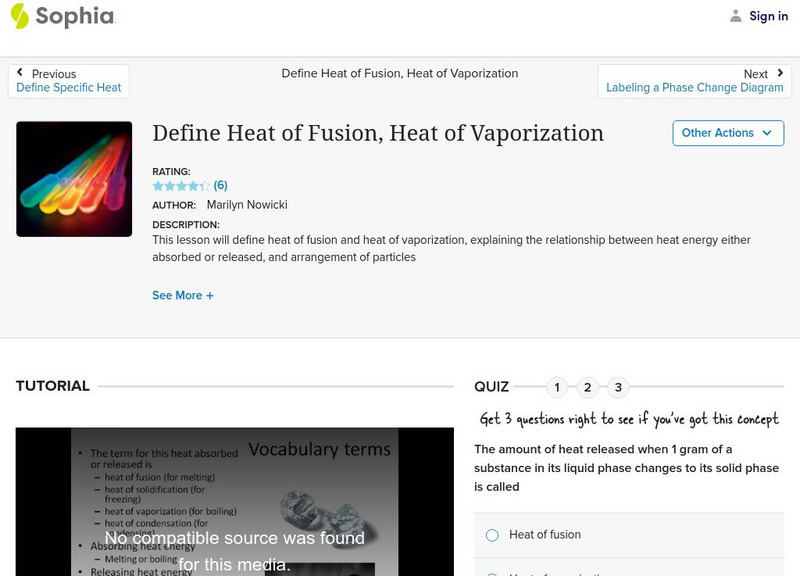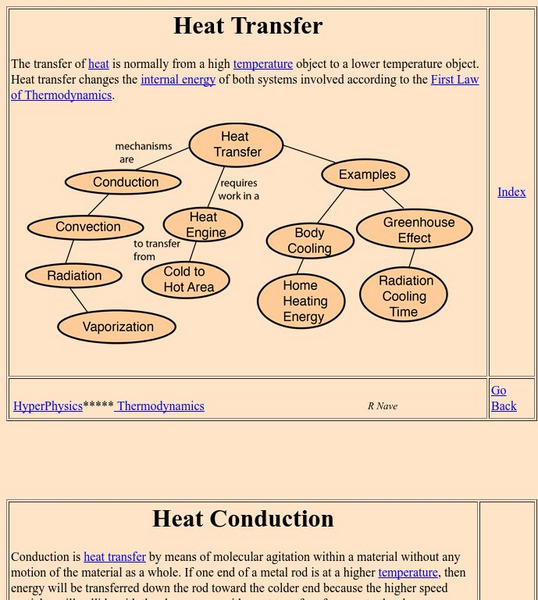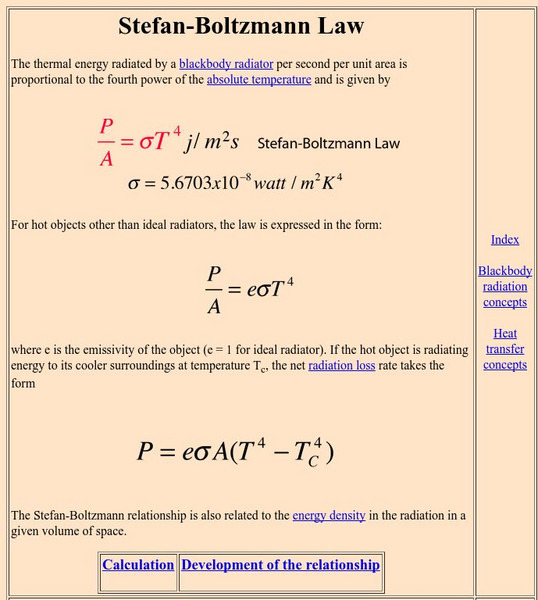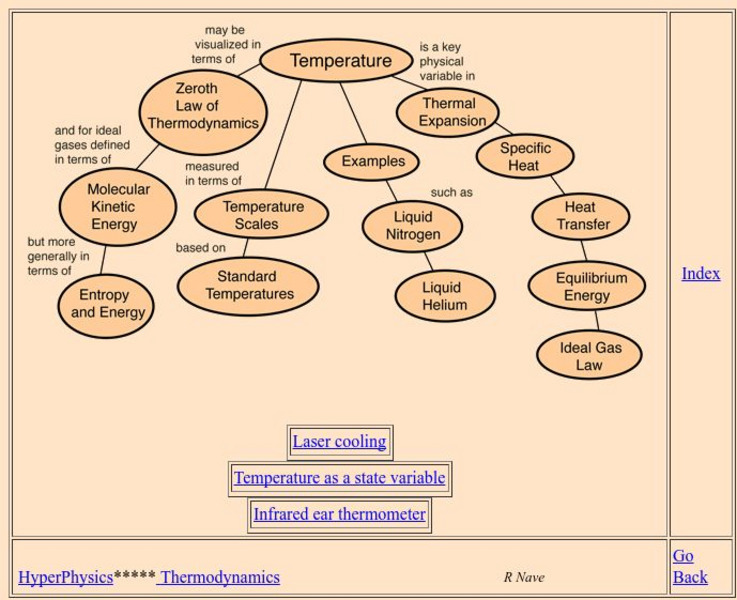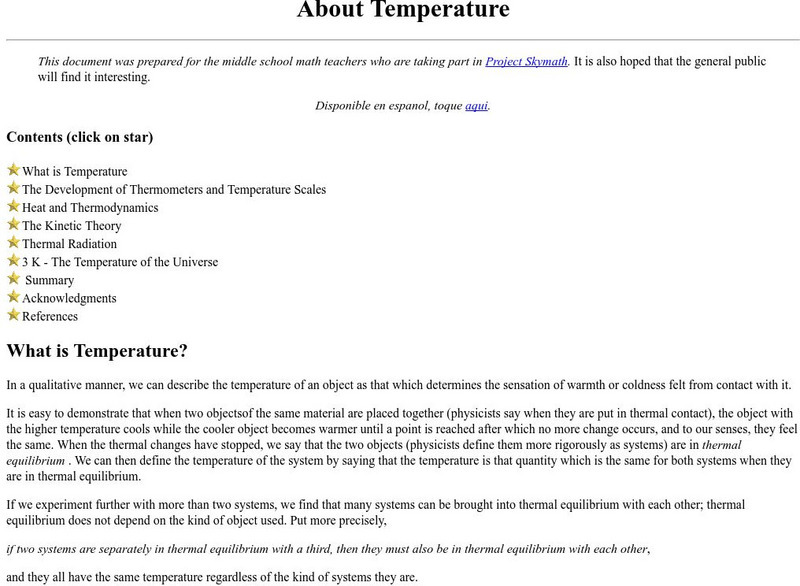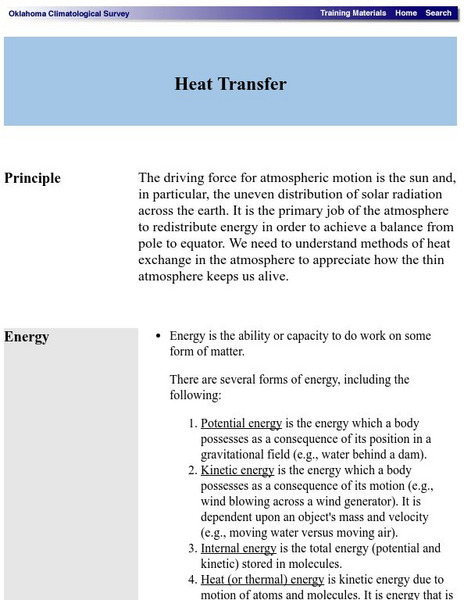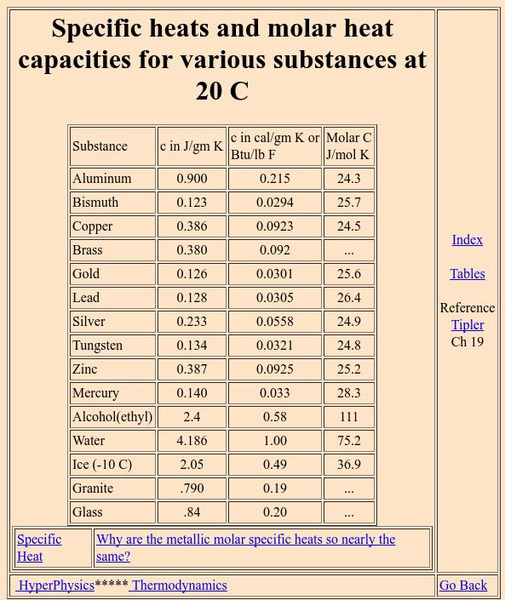Read Works
Read Works: Heat, Energy, and Bicycling in New York City
[Free Registration/Login Required] An informational text about how bikes can be used to solve some traffic problems in New York City. A question sheet is available to help students build skills in reading comprehension.
CK-12 Foundation
Ck 12: Earth Science: Introduction to Energy Resources
[Free Registration/Login may be required to access all resource tools.] Overview of the types of energy, and how it can be stored and released.
CK-12 Foundation
Ck 12: Earth Science: Temperature and Heat in the Atmosphere
[Free Registration/Login may be required to access all resource tools.] Overview of temperature and heat.
CK-12 Foundation
Ck 12: Plix Series: Gay Lussac's Law
[Free Registration/Login Required] Increase the heat in the virtual container, and observe what happens to the internal pressure.
CK-12 Foundation
Ck 12: Physical Science: Endothermic Reactions
[Free Registration/Login may be required to access all resource tools.] Definition of an endothermic reaction, the role of energy, and examples of endothermic reactions.
CK-12 Foundation
Ck 12: Physical Science: Heat
[Free Registration/Login may be required to access all resource tools.] Definition of heat and how thermal energy is transferred.
Sophia Learning
Sophia: Define Heat of Fusion, Heat of Vaporization
A narrated video tutorial defines two types of heat exchanges: heat of fusion and heat of vaporization. The content focuses on the relationship between heat energy either absorbed or released, and arrangement of particles. [3:42]
Sophia Learning
Sophia: Identify Enthalpy of Reaction
A video tutorial explaining the enthalpy of a reaction using an energy diagram. [2:42]
BBC
Bbc Schools: Ks2 Bitesize: Science: Materials: Heat
A short, illustrated tutorial about how heat energy moves. After reading the material, take a quick quiz to check for understanding.
NASA
Nasa: The Space Place: Match Light Faces With Heat Faces
This site from the National Aeronautics and Space Administration provides information on the subject. "An infrared camera sees heat, rather than light. Can you match up the face in the infrared image with the same face in visible light?"
Georgia State University
Georgia State University: Hyper Physics: Heat Convection
Using understandable words and exceptional graphics, this page describes the transfer of energy by means of the convection process. Contains several links to related topics.
Georgia State University
Georgia State University: Hyper Physics: Heat Pump
Heat flow from a hot region to a cold region is described and explained. Applications of this phenomenon (specifically heat pumps and refrigerators) are discussed. Excellent graphics.
Georgia State University
Georgia State University: Hyper Physics: Entropy
This informative site is from Georgia State University. The tendency of nature to move towards a more disordered state in an isolated system, a concept known as entropy, is discussed. This concept is well-depicted in meaningful diagrams.
Georgia State University
Georgia State University: Hyper Physics: Heat of Fusion
The heat of fusion is defined and described. A graphical representation of the heat of vaporization is given. A method for measuring and calculating the heat of fusion is also presented and explained.
Georgia State University
Georgia State University: Hyper Physics: Saturated Vapor Pressure
The meaning of vapor pressure is introduced. The distinction between evaporation and boiling is discussed and explained. The reason that liquids undergo vaporization is explained.
Georgia State University
Georgia State University: Hyper Physics: Radiation Cooling of Body
Discusses the means by which the body regulates its temperature. The role of radiation in this process is explained. An equation for calculating the rate at which energy is transferred by radiation is presented. Also, an interactive...
Georgia State University
Georgia State University: Hyper Physics: Heat Radiation
The process of energy transfer by radiation is discussed. An equation for calculating the rate of radiative energy transfer is provided. Variables in the equation are explained. An interactive form allows for problem-solving practice...
Georgia State University
Georgia State University: Hyper Physics: Temperature Concepts
An indexing page which includes links to a wealth of pages detailing the conceptual meaning of temperature. A hypertext format allows the visitor to quickly gain access the desired information.
University Corporation for Atmospheric Research
Ucar: About Temperature
This site from the University Corporation of Atmospheric Research provides a lengthy page covering numerous topics including the difference between heat and temperature, the use of different temperature scales, thermal expansion, how a...
Oklahoma Mesonet
Oklahoma Climatological Survey: Heat Transfer
A discussion from the Oklahoma Climatological Survey of the thermal factors effecting the movement of air masses in the atmosphere. Numerous topics such as methods of heat transfer, latent heat, phase changes (including sublimation and...
Other
Princeton Plasma Physics Laboratory: Fusion Basics
A wealth of background information on nuclear fusion and its potential use as a commercial energy resource. The advantages of nuclear fusion over other resources, the conditions required for its successful implementation and the future...
University of Colorado
University of Colorado: Physics 2000: Temperature and Absolute Zero
Another awesome page from the Physics 2000 site. Entertaining, interactive, educational, understandable. Explains the meaning of temperature and absolute zero. Discusses the temperature scales. Requires Java.
Physics Aviary
Physics Aviary: Practice Problems: Efficiency of an Engine
Determine the efficiency of an engine (0 - 1) based on the energy flow that is presented to you.
Georgia State University
Georgia State University: Hyper Physics: Specific Heats and Molar Heat Capacities
A lengthy listing of values for specific heats and molar heat capacities for a variety of substances at 20 C. An explanation is given for why molar heat capacities for metals are nearly the same.








